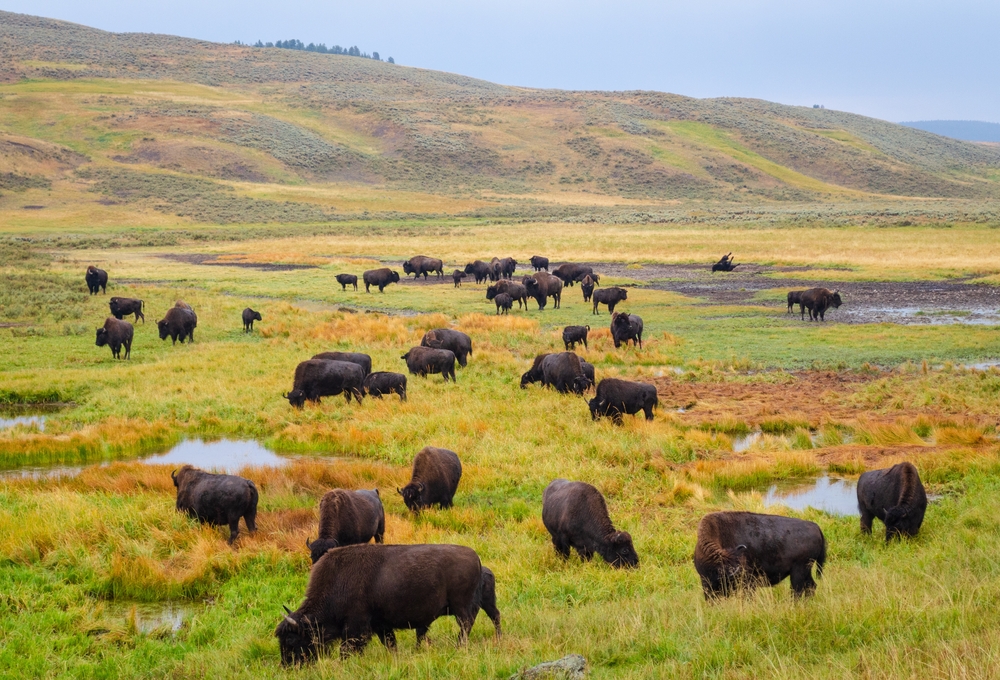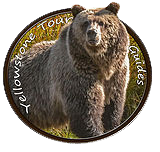How to Spot Wildlife Safely on Your Yellowstone National Park Tour

Yellowstone National Park is a dream destination for nature lovers, offering breathtaking landscapes and unparalleled opportunities to witness animals in their natural habitats. From grizzly bear and wolf sightings to herds of bison and elk grazing in open meadows, Yellowstone wildlife tours provide visitors with unforgettable experiences. However, spotting animals in the wild comes with the responsibility to protect both yourself and the wildlife. Safe wildlife watching in Yellowstone requires preparation, awareness, and respect for the park’s regulations. In this guide, you’ll learn the best practices to enjoy the best wildlife viewing Yellowstone has to offer—while staying safe and preserving the natural beauty of the park.
The Best Times and Places for Wildlife Viewing
One of the most important factors for having a memorable wildlife experience is timing. The best wildlife viewing in Yellowstone typically occurs in the early morning or late evening, when many animals are most active. At these times, temperatures are cooler, and the park’s landscapes take on a serene glow, adding to the magic of the experience. Lamar Valley, Hayden Valley, and the Northern Range are some of the most renowned spots for observing wildlife. Lamar Valley is famous for grizzly bear and wolf sightings in Yellowstone, while Hayden Valley offers excellent chances to see bison, elk, and even otters along the riverbanks.
Seasonality also plays a role. Spring and early summer are ideal for spotting newborn animals, while late summer and fall bring the elk rut and increased predator activity. Winter, though quieter for tourism, can be extraordinary for those on guided wildlife tours in Yellowstone National Park, offering opportunities to see wolves hunting in the snow or bison plowing through drifts. Choosing the right location and time of year ensures you maximize your wildlife encounters.
Safe Wildlife Watching: Guidelines for Visitors
While the excitement of seeing a grizzly bear or a pack of wolves is unmatched, it’s essential to remember that these are wild and unpredictable animals. The National Park Service sets clear guidelines to ensure safe wildlife watching in Yellowstone. Visitors must maintain a minimum distance of 100 yards (about 91 meters) from bears and wolves, and at least 25 yards from all other wildlife. This distance protects not only you but also the animals, preventing stress or dangerous encounters.
Never feed or attempt to attract wildlife—it disrupts their natural behavior and can lead to aggressive encounters. If you’re hiking, make noise periodically to avoid surprising animals, particularly in areas with dense vegetation or limited visibility. Carrying bear spray is strongly recommended, especially if you venture beyond developed areas. Bear spray should be kept accessible and used only in emergencies. Responsible wildlife viewing also means staying on designated trails and pullouts, using binoculars or spotting scopes instead of approaching animals for a closer look.
The Benefits of Guided Wildlife Tours in Yellowstone National Park
For many visitors, joining guided wildlife tours in Yellowstone National Park is the best way to experience the park’s diverse fauna safely and effectively. Knowledgeable guides know where animals are most likely to be found at different times of year and can interpret their behavior, adding depth to your experience. They also carry the proper safety equipment, such as spotting scopes, radios, and bear spray, so you can focus on enjoying the moment without worrying about logistics.
Guided tours often start at dawn, giving you the best chance to see elusive species like wolves or mountain lions. Many guides have years of experience tracking specific packs or individuals, allowing for more frequent grizzly bear and wolf sightings in Yellowstone. Additionally, joining a tour helps reduce the overall number of vehicles stopping in sensitive wildlife areas, minimizing environmental impact while increasing your chances of witnessing unique interactions between animals. For first-time visitors or those seeking expert insight, a guided experience can elevate your Yellowstone trip from memorable to extraordinary.
Recognizing and Respecting Animal Behavior
A crucial part of safe wildlife watching in Yellowstone is understanding animal behavior. Recognizing the signs of stress in wildlife can prevent dangerous situations. For example, if a bison raises its tail, paws the ground, or snorts, it may be preparing to charge. Bears that huff, growl, or snap their jaws are signaling that you are too close. Wolves, though often wary of people, may defend a recent kill or den if approached.
Learning to observe quietly without altering an animal’s actions is key to ethical wildlife viewing. Use optics to watch from a safe distance and remain still to avoid drawing attention. If an animal changes direction, speeds up, or shows signs of distress due to your presence, it’s time to move away. This not only keeps you safe but also ensures the animals continue their natural routines, providing a more authentic and respectful experience for everyone involved.
Conclusion
Yellowstone National Park offers some of the best wildlife viewing opportunities in North America, from grizzly bear and wolf sightings in Yellowstone’s vast valleys to the quiet majesty of elk herds moving through the forest. Whether you choose to explore on your own or join guided wildlife tours in Yellowstone National Park, the key to a successful trip lies in preparation, patience, and respect for the park’s rules. Safe wildlife watching in Yellowstone ensures that both visitors and animals remain protected, allowing future generations to enjoy the same wild beauty. By understanding the best times and places for viewing, respecting safe distances, and interpreting animal behavior, you can make the most of your Yellowstone adventure—while preserving the delicate balance of its ecosystem. Your tour will not only be thrilling but also contribute to the ongoing protection of this incredible natural treasure.
Need Guided Tours Of Yellowstone National Park?
Welcome to Yellowstone Tour Guides! We here at Yellowstone Tour Guides are a family-owned tour agency that specializes in tours, sightseeing, and hikes throughout Yellowstone and Big Sky, Montana! Since 2001, we have been dedicated to showing families the beauty of Yellowstone Nation Park. We offer small-group sightseeing tours, multi-day backpacking, and hiking tours. We also provide private vacation planning and tours! We look forward to exploring Yellowstone with you! Call us today!
